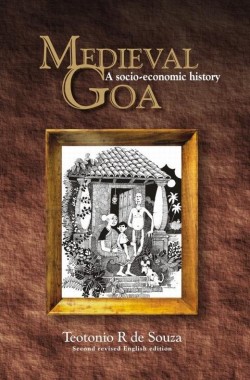
Souza’s PhD thesis, now re-published as Medieval Goa. It challenges the view that Portuguese rule in South Asia resulted in a period of golden rule in Goa in the sixteenth and seventeenth centuries.
The author sees “Golden Goa” as an expression popularised by art historians with reference to baroque church architecture of the early centuries of the Portuguese rule.
After a first century of nearly undisputed mastery over the western Indian ocean, and after a sufficiently long spell of prosperity, misfortunes began falling thick and fast upon the Portuguese Empire.
In 1580, Portugal lost its independence and the crowns of Spain and Portugal were united in the person of Philip II of Spain, who assumed the title of Philip I of Portugal. True, Portuguese administration and trade were left in the hands of Portuguese nationals, but the royal authority in Spain showed little concern for the growing difficulties of the Portuguese in the East.
Portugal had no foreign policy of its own and the enemies of Spain were turned into enemies of Portugal. Despite promises to the contrary, Spain also used financial resources and manpower from Portugal in order to quell Dutch insurgency against Spanish rule.
In 1640, the Portuguese regained their independent rule, but it was too late to repair the damage to the national and imperial economy. The century-old fabric of the Portuguese eastern empire had been torn apart and appropriated by its North-European rivals.


